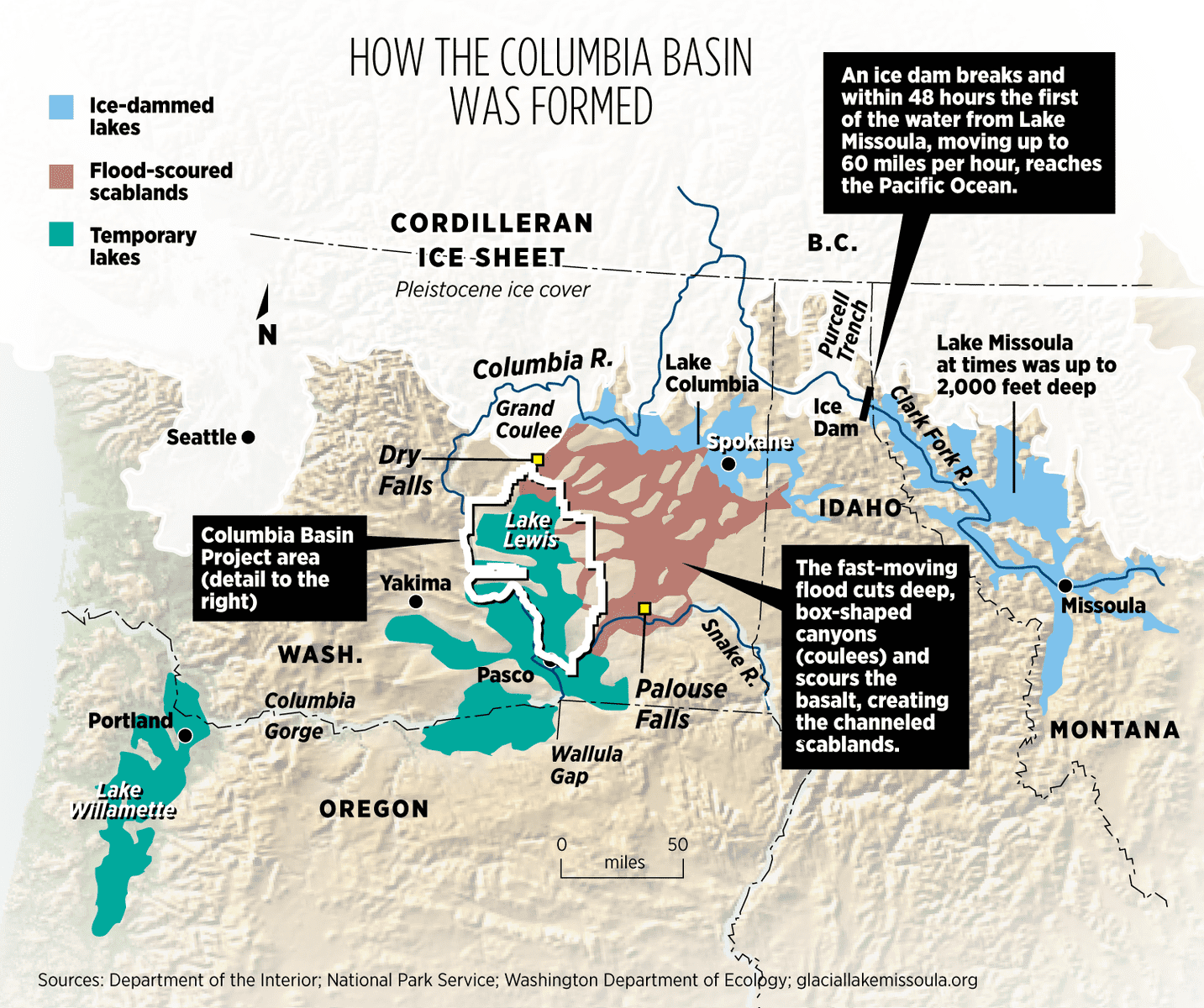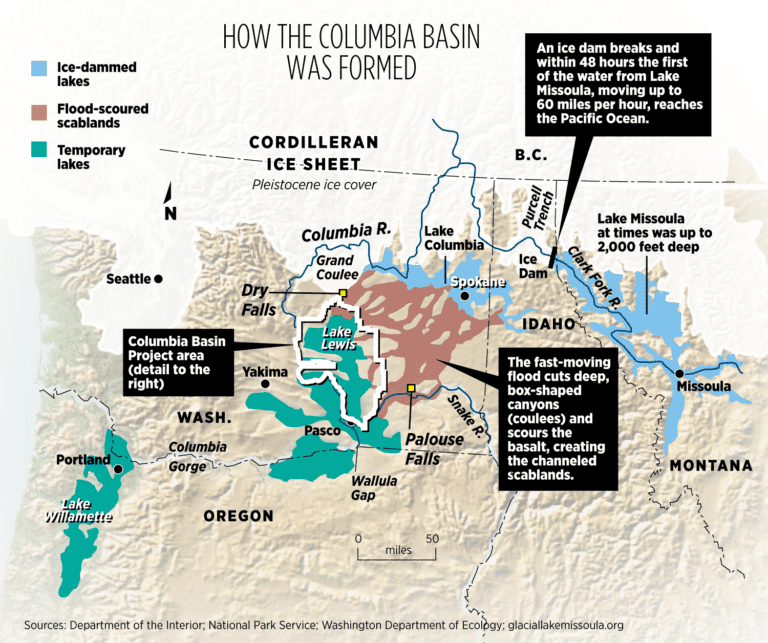Have you had a 10,000 year-old glass of water? The water that’s pumped up from the Columbia Basin’s deepest irrigation wells (some as deep as 2,500 feet) has been there for at least that long.
Unfortunately, this prehistoric glass of water wouldn’t taste very good. Because of high pressure, water that deep is hot, about 125 degrees or as hot as a latte. Plus, it’s full of corrosive minerals. According to radiocarbon testing by the Washington Department of Ecology, the Odessa aquifer water system is “dominated by waters 10,000 or more years old.”
This massive underground water supply was created during the most recent ice age, when large lakes covered eastern and central Washington and catastrophic floods carved out the scablands. The aquifer hasn’t been refilled since. There is no geologic connection to any surface water sources to replenish the aquifer, and groundwater pulled from the aquifer is not replaced by natural means.
This water has been used to irrigate crops since the 1950s, and now the aquifer is nearly depleted. The Columbia Basin Project irrigates about 670,000 acres of land. If completed, the project would irrigate 1.1 million. In the 1960s, as the project seemed to be hurrying […]
Full article: “Non-renewable” central Washington water source nearly run dry



